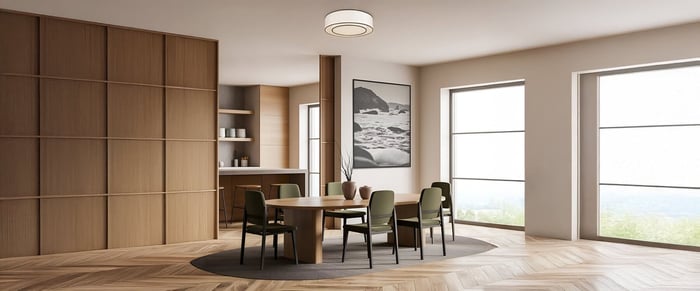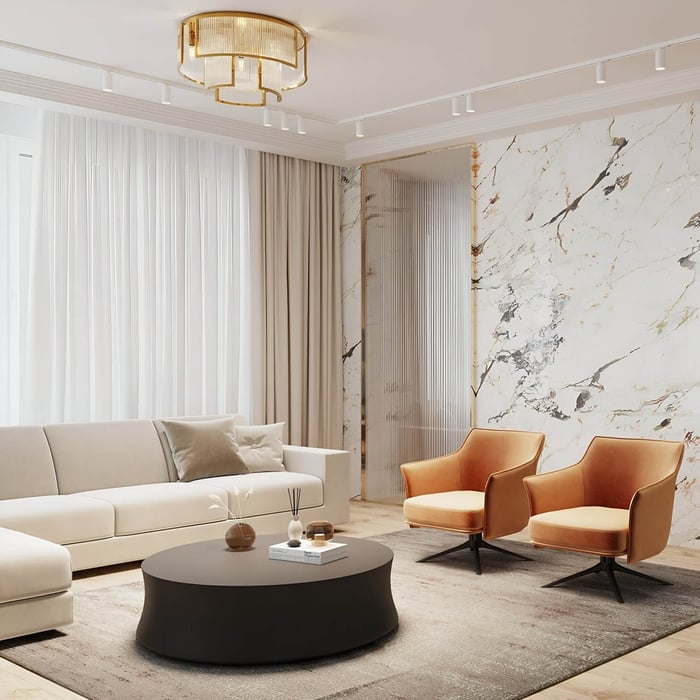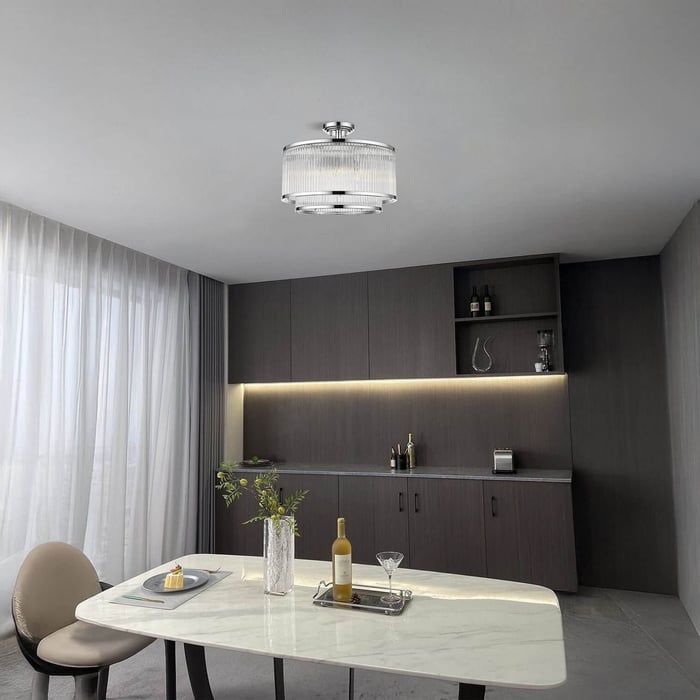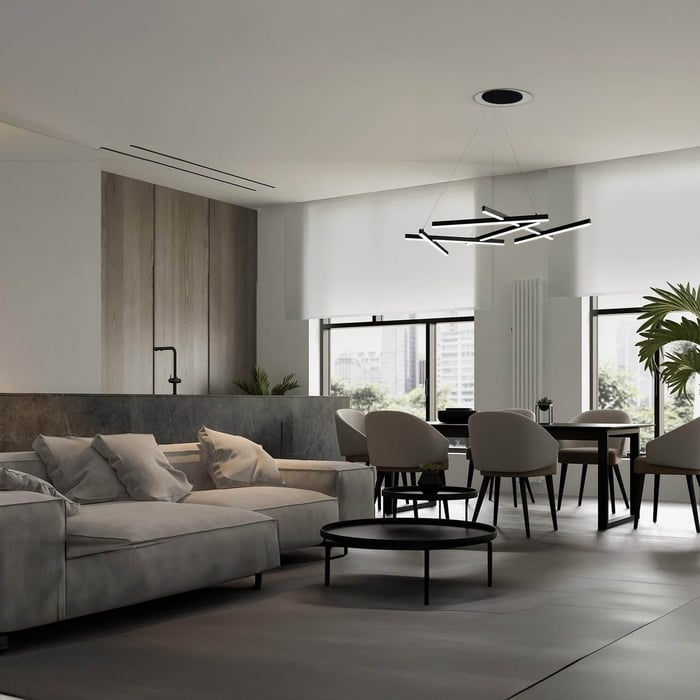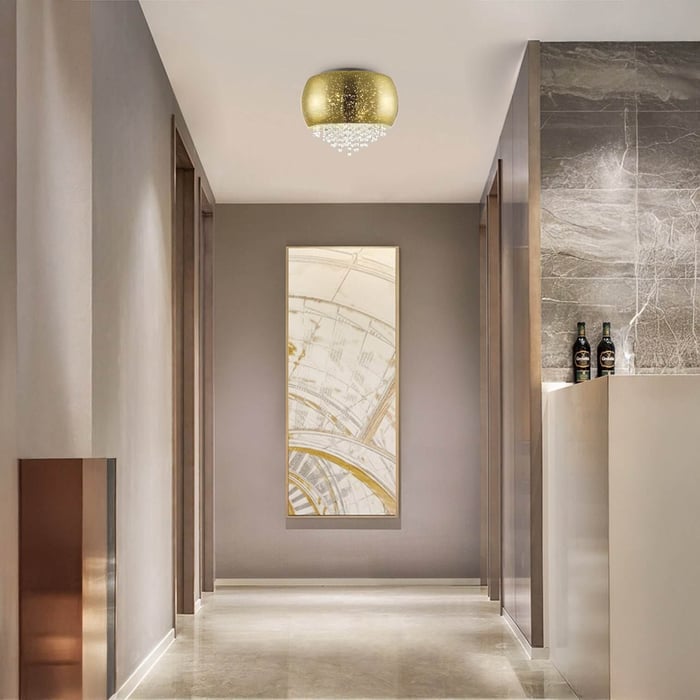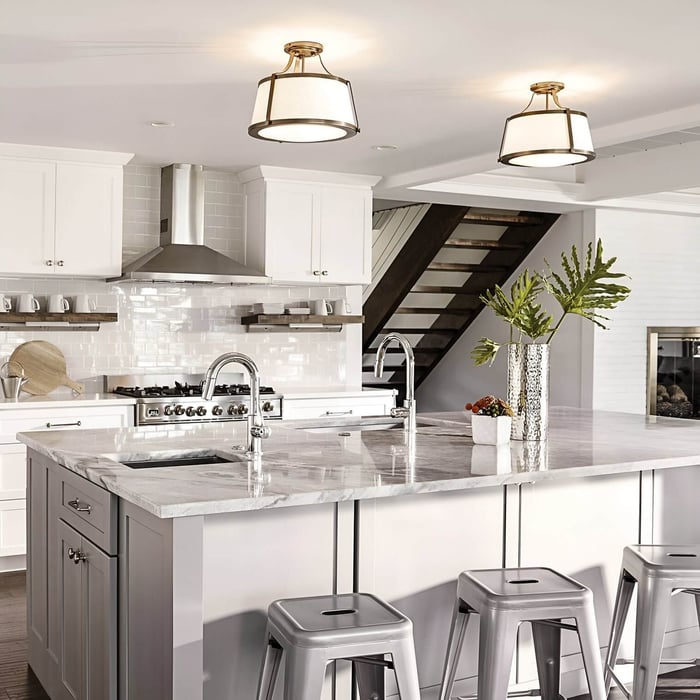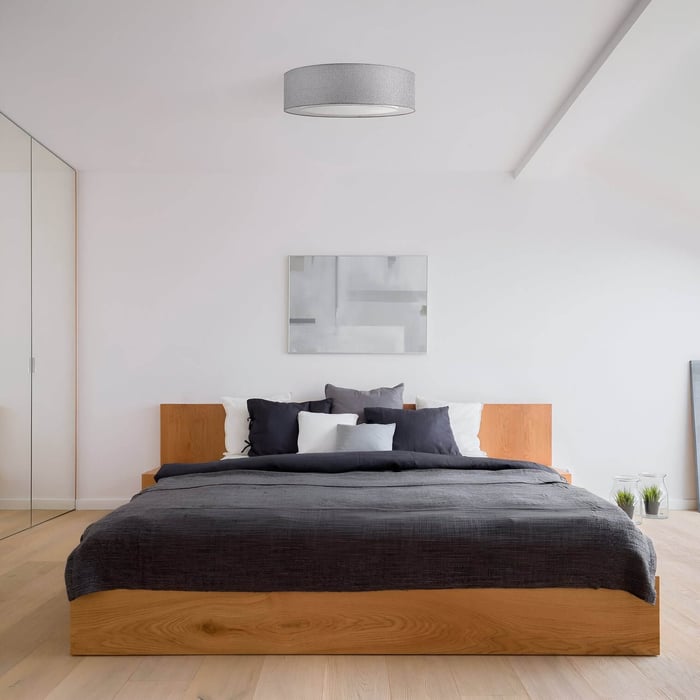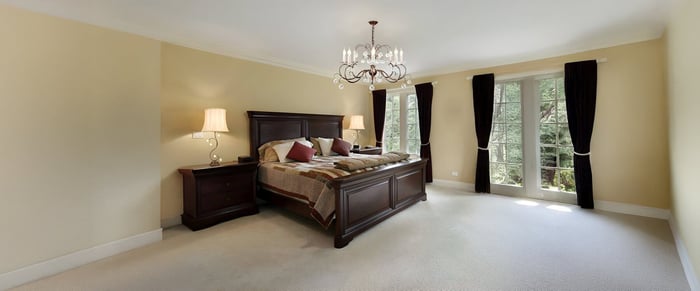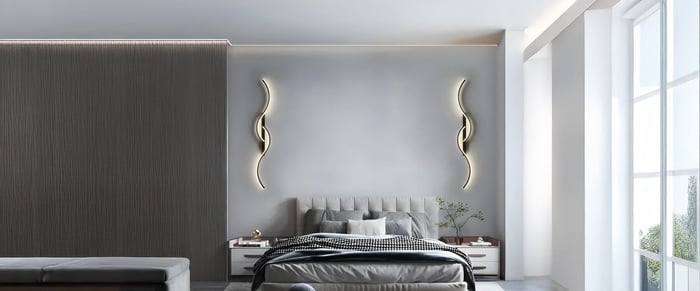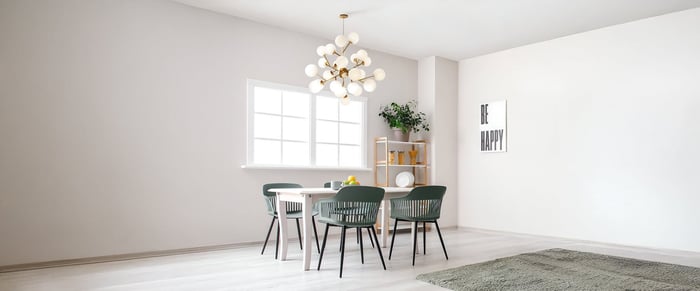Table of Contents
Introduction
Ceiling lights are often the first fixtures people notice in a room. They don’t just provide brightness; they shape how evenly a space feels illuminated, how welcoming it appears, and how functional it becomes for daily life. When positioned well, they enhance comfort and style while reducing the risk of dark spots or unnecessary glare. Poorly placed fixtures, on the other hand, can make even a beautifully designed room feel awkward and uncomfortable.
The art of lighting design lies not only in selecting attractive fittings but also in arranging them thoughtfully. This article explores how positioning influences both mood and practicality. We’ll break down spacing guidelines, height considerations, and placement strategies tailored to living rooms, bedrooms, kitchens, and dining rooms. By the end, you’ll know how to approach installation with confidence, ensuring every corner of your home benefits from the right balance of illumination.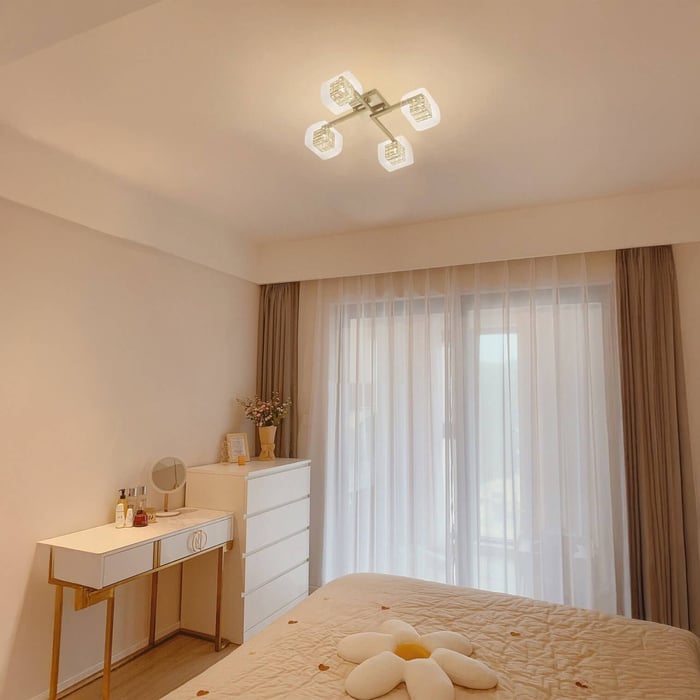
Why Positioning Matters in Ceiling Lights
Positioning is often overlooked, but it’s as important as choosing the right design. A striking fixture loses its impact if shadows dominate the room or if glare makes the environment uncomfortable. Let’s look at why correct placement matters:
Even Coverage
Well-placed fixtures distribute light evenly, preventing areas of brightness from clashing with zones of dimness. This balance creates visual harmony and helps the room feel complete.Avoiding Glare
Sitting directly under a harsh beam is uncomfortable. Careful positioning keeps light at levels that complement furniture layouts rather than disrupt them.Enhancing Mood
Beyond functionality, lighting defines ambiance. Placement influences whether a dining area feels intimate, whether a bedroom feels restful, and whether a kitchen inspires energy.
General Rules for Ceiling Light Placement
Although each room requires different considerations, some universal rules apply:
Spacing Guidelines
As a rule of thumb, plan one fixture for every 4–6 feet of ceiling space. Larger rooms or open-plan layouts may need more frequent spacing, while smaller rooms benefit from fewer but strategically positioned fixtures.Height Considerations
Ceiling height dictates fixture style. Low ceilings often call for flush or semi-flush fittings, while high ceilings allow for pendants or chandeliers that provide both light and architectural interest.Furniture Awareness
Consider how the space is used. Fixtures should avoid shining directly over sofas, beds, or coffee tables unless paired with shades or diffusers. This prevents discomfort and maintains harmony with furniture placement.Layering for Flexibility
Relying solely on overhead lighting flattens a room. Position ceiling fixtures in a way that supports wall lights, lamps, or accent lighting, ensuring variety and depth.
Positioning Ceiling Lights by Room
Living Room Placement
Living rooms are versatile spaces, shifting from casual relaxation to entertaining guests. Lighting should reflect this flexibility.
Layered Approach
Use ceiling lights for broad coverage, complemented by floor lamps or sconces. Position fixtures toward the room’s perimeter rather than clustering them in the center. This distributes brightness evenly without overwhelming one area.Accenting Features
If the room includes a fireplace, artwork, or shelving, aim fixtures toward these elements. Ceiling placement that highlights focal points creates visual interest and enhances mood.
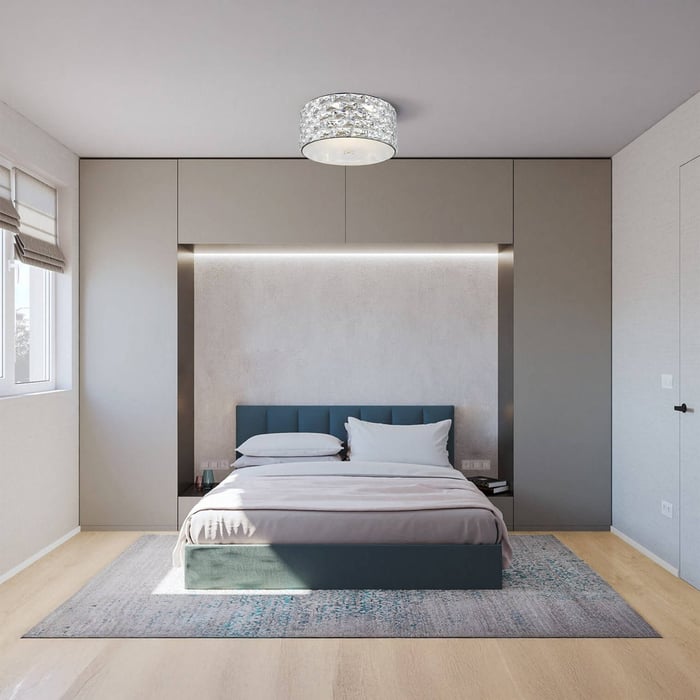 Bedroom Placement
Bedroom Placement
Bedrooms should encourage calm while supporting practical activities like reading or dressing.
Soft Central Glow
A central fixture offers general illumination, but the effect should be softened with shades or diffusers. Consider dimmable options for greater control.Avoiding Over-Bed Harshness
Placing fixtures directly above the bed can cause uncomfortable glare. Instead, offset them slightly or balance them with bedside lamps that provide intimacy and layered depth.Complementary Lighting
Position wall lights or sconces near the headboard for reading, ensuring the ceiling fixture’s role remains supportive rather than overpowering.
Kitchen Placement
Kitchens demand functionality, but they also benefit from thoughtful design.
Task Lighting Priority
Position ceiling fixtures so they fall between counters rather than directly overhead. This prevents shadows from being cast where food is prepared.Island & Sink Illumination
For islands, align pendants evenly to provide balance and highlight the workspace. Near sinks, place fixtures at angles that keep water zones clear and bright.Balance with General Lighting
While focused illumination is essential, ensure the entire kitchen feels consistently lit by spacing ceiling lights evenly across the layout.
Dining Room Placement
The dining room thrives on ambiance, where lighting sets the tone for gatherings.
Centerpiece Placement
Always anchor a chandelier or pendant directly above the dining table. This acts as both a design statement and a functional necessity.Supportive Spacing
Avoid making the table the only lit area. Place supplementary ceiling fixtures around the room’s edges to prevent contrast between a bright table and dark surroundings.Adjustable Ambiance
Dimmer switches allow the central fixture and supporting lights to transition from lively family meals to intimate dinners.
Sizing & Scaling Ceiling Lights
The size of fixtures affects not only the look but also the effectiveness of illumination.
Proportion to Room Size
Larger rooms benefit from oversized fixtures or clusters, while small rooms require modest fittings to prevent overwhelm.Ceiling Height Awareness
For rooms with tall ceilings, choose larger or layered fixtures that fill vertical space. Compact rooms benefit from flush-mounted designs that maintain proportion.Balancing Furniture
Scale fixtures in relation to furniture - oversized pieces over a dining table or living room coffee table look intentional, while undersized fittings may appear lost.
Common Mistakes to Avoid
Even with attractive designs, poor planning can sabotage results.
Overcrowding Fixtures
Placing too many fixtures close together can make a room feel clinical rather than inviting.Ignoring Layout
Failing to consider furniture positions often results in glare directly over seating or shadows on functional areas.Overreliance on a Single Fixture
Depending solely on one central light leaves rooms flat and uninspiring. Ceiling lights should be part of a layered plan.
Advanced Positioning Tips
Dimmers for Versatility
Installing dimmers lets you adjust intensity for different moods and tasks.Blending Temperatures
Warm tones are ideal for bedrooms and dining rooms, while cooler tones energize kitchens and home offices.Highlighting Architecture
Direct fixtures toward alcoves, beams, or decorative details for added depth and character.Consistency Across Rooms
Maintain a cohesive look by choosing fixtures that complement one another, ensuring flow between living spaces.
Conclusion
Positioning ceiling lights is both an art and a science. It requires attention to scale, placement, and layering to achieve professional-quality results. In living rooms, strategic spacing fosters flexibility. In bedrooms, thoughtful placement encourages rest while avoiding glare. Kitchens demand precision for tasks, and dining rooms thrive on centered fixtures supported by balanced illumination.
By applying spacing rules, considering ceiling height, and avoiding common mistakes, you can transform how your home feels. Ceiling lights, when placed correctly, enhance mood, functionality, and style. The best results come not from guesswork but from planning with both practicality and atmosphere in mind.
FAQs
How far apart should ceiling lights be placed for even coverage?
A general guideline is one fixture every 4–6 feet, but this can vary depending on room size, ceiling height, and the type of fixture. Proper spacing ensures there are no dark spots or overly bright patches.
What is the best height to hang ceiling lights?
For standard rooms, fixtures should typically hang 7 feet above the floor to avoid glare and maintain proportion. Higher ceilings may require either larger fixtures or layered lighting to keep the space balanced.
Should ceiling lights be centered in every room?
Not always. While central placement works in bedrooms and dining rooms, kitchens and living rooms often need layered or perimeter placement to create balance and reduce shadows in task areas.
How do I choose the right size of ceiling lights for my room?
The diameter of the fixture should be proportional to the room size. A quick rule of thumb is to add the room’s length and width (in feet) and convert that total into inches to estimate fixture size.
What mistakes should I avoid when positioning ceiling lights?
Common errors include placing fixtures too close together, ignoring furniture layout, relying solely on a single central fixture, or installing lights directly above seating, which can cause glare and discomfort.
